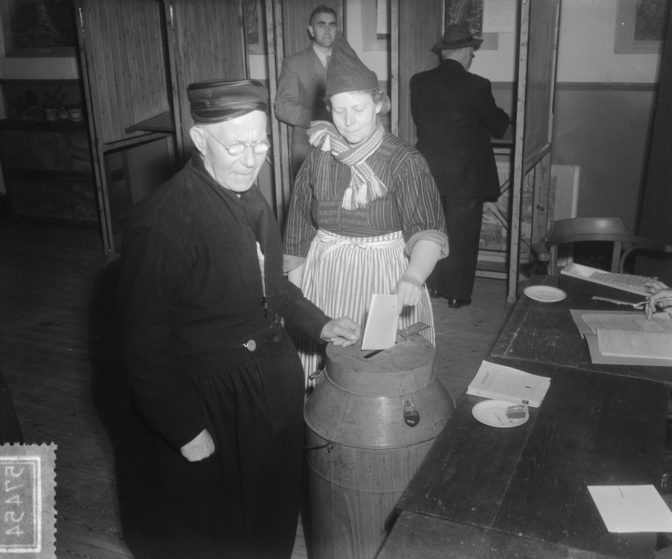Verkiezing means election. In the Netherlands, it took until 1917 for all men to get the vote. Before that time, only men with sufficient means were allowed to cast a vote. Women followed two years later and got the vote in 1919.
In the Netherlands, citizens can vote for three levels of government:
- National (Tweede Kamer, house of representatives)
- Provincial (Provinciale Staten, provincial representatives)
- Municipal (Gemeenteraad, the town council)
- Water board (Waterschap)
The Netherlands is a constitutional monarchy, so the head of state (the King) is not elected but that is an hereditary function. The head of the government is the prime minister who is not elected directly. He is usually the leader of the largest party in the House of Representatives.
While the Netherland has had several queens as heads of state, it has not had a female prime minister. The first female vice prime minister were Annemarie Jorritsma and Els Borst, in 1998.

Casting a vote in Volendam, 1953. Credits: Harry Pot, collection Nationaal Archief (CC-BY)

